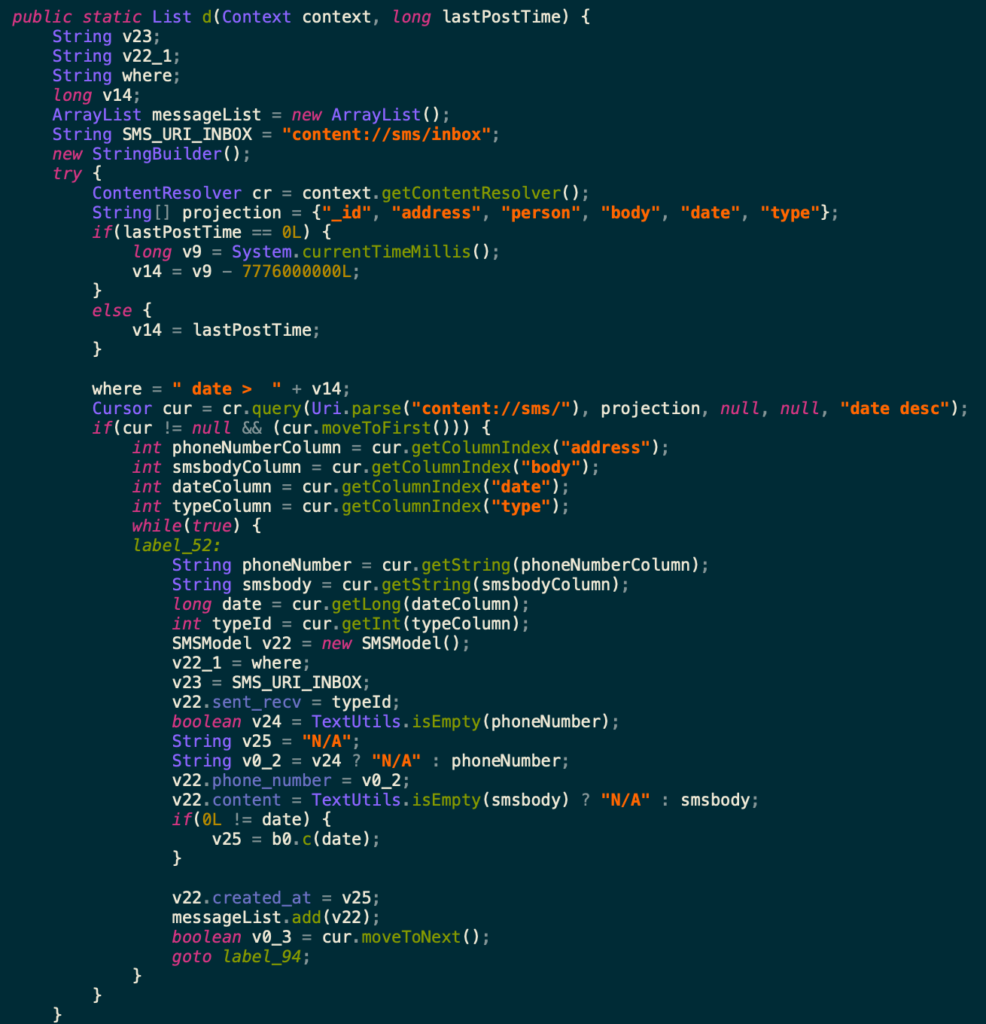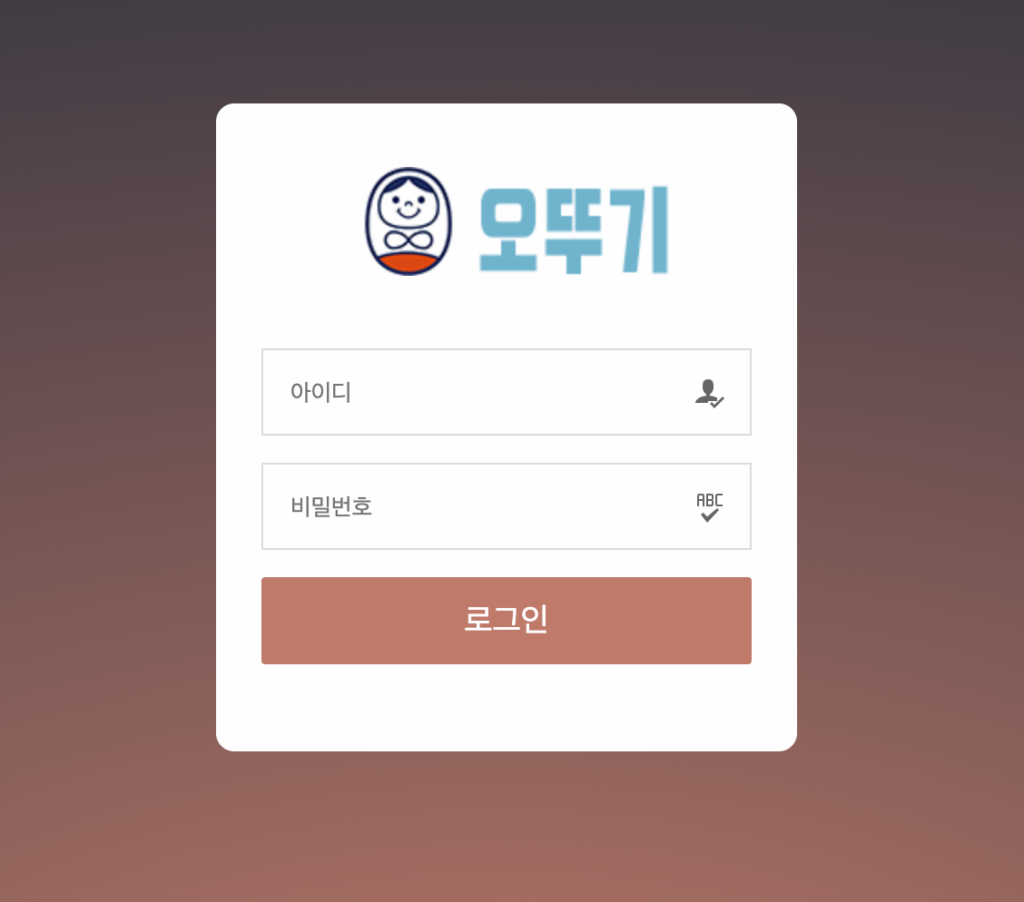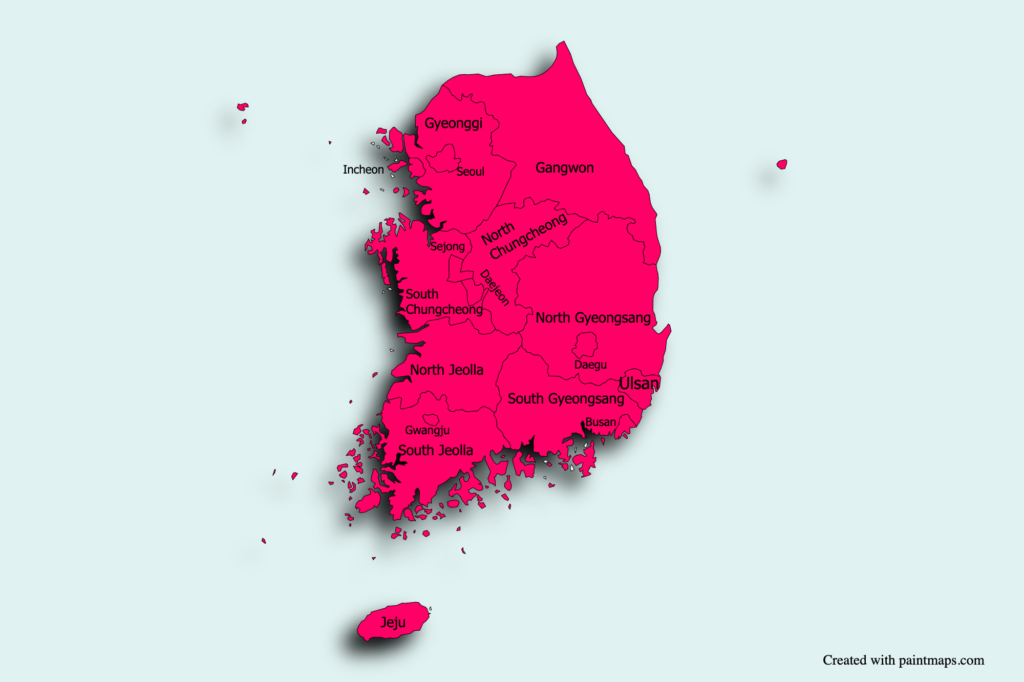Update November 22, 2021: It has been determined that this specific campaign is no longer active. The command and control server has been taken down, and the infected devices are no longer under the control of the attackers.
Many of the malware campaigns we have detected over the last year have been global at scale, targeting anyone with little regard to their location. Recently, we discovered and began monitoring the activity behind PhoneSpy, a spyware aimed at South Korean residents with Android devices. With more than a thousand South Korean victims, the malicious group behind this invasive campaign has had access to all the data, communications, and services on their devices.
Unlike other spyware campaigns we have covered that take advantage of vulnerabilities on the device, PhoneSpy hides in plain sight, disguising itself as a regular application with purposes ranging from learning Yoga to watching TV and videos, or browsing photos. But in reality, the application is stealing data, messages, images, and remote control of Android phones. The data stolen from victim devices ranged from personal photos to corporate communications. The victims were broadcasting their private information to the malicious actors with zero indication that something was amiss.
While the victims have been limited to South Korea, PhoneSpy is an example of how malicious applications can disguise their true intent. When installed on victims’ devices, they leave personal and corporate data at risk. With mobile devices playing critical roles in distributed and remote work, it is no surprise that spyware campaigns like PhoneSpy are on the rise.
Samples of PhoneSpy were not found in any Android app store, indicating that attackers are using distribution methods based on web traffic redirection or social engineering.
Once in control, the attackers can access the camera to take pictures, record video, and audio, get precise GPS location, view pictures from the device, and more.
Zimperium zLabs identified the PhoneSpy spyware app during routine threat research, and the zLabs team launched an investigation after identifying multiple related malicious applications.
Disclosure: Due to the nature of this spyware campaign, Zimperium has notified and submitted all relevant threat data to US and South Korean authorities. The Zimperium team also reported to the host of the command and control server multiple times, offering support in a takedown of the malicious services. At the time of this writing, the PhoneSpy spyware campaign is still active.
In this blog, we will:
- Cover the capabilities of the Android spyware;
- Discuss the techniques used to collect and store data; and
- Show the communication with the C&C server to exfiltrate stolen data.
What Can PhoneSpy Spyware Do?
The mobile application poses a threat to Android devices by functioning as an advanced Remote Access Trojan (RAT) that receives and executes commands to collect and exfiltrate a wide variety of data and perform a wide range of malicious actions, such as:
- Complete list of the installed applications
- Steal credentials using phishing
- Steal images
- Monitoring the GPS location
- Steal SMS messages
- Steal phone contacts
- Steal call logs
- Record audio in real-time
- Record video in real-time using front & rear cameras
- Access camera to take photos using front & rear cameras
- Send SMS to attacker-controlled phone number with attacker-controlled text
- Exfiltrate device information (IMEI, Brand, device name, Android version)
- Conceal its presence by hiding the icon from the device’s drawer/menu
Upon infection, the victim’s mobile device will transmit accurate GPS locational data, share photos and communications, contact lists, and downloaded documents with the command and control server. Similar to other mobile spyware we have seen, the data stolen from these devices could be used for personal and corporate blackmail and espionage. The malicious actors could then produce notes on the victim, download any stolen materials, and gather intelligence for other nefarious practices.
How Does PhoneSpy Spyware Work?
The PhoneSpy spyware disguises itself as various lifestyle apps targeting Korean-speaking users. It is most likely distributed through web traffic redirection or social engineering as it has not been detected in Android stores, including third-party or regional stores. After installation, the application requests permissions and opens a phishing page that imitates the login page of the popular South Korean messaging app “Kakao Talk” to steal credentials.
The application follows the typical behavior of spyware by asking for permissions to exercise its capabilities.
Figures.1,2: The list of permissions requested by one of the applications
After installation and launch, the app displays a login page and attempts to steal the credentials for “Kakao” which can be used to login into other services in South Korea with the Single-Sign-On feature.
Figures.3-5: The phishing pages hosted by the threat actors
In most of the discovered applications, the application’s user/victim interaction is limited to the above sign-on, only to receive an error message. Many of the applications are facades of a real app with none of the advertised user-based functionality. In a few other cases, like simpler apps that advertise as photo viewers, the app will work as advertised all while the PhoneSpy spyware is working in the background.

Figure.6: Dynamic loading of content from the remote server
Figures.7-10: The fake gallery website displayed by the app & the files hosted on it
While these actions are taking place in the foreground, the spyware abuses its permissions and acts as a Remote Access Trojan, leaving the device open to access for the threat actors. The spyware makes sure to avoid data redundancy by only uploading the latest data created after the last upload, as seen in Figure.11.

Figure.11: SMS data collection and exfiltration to the C&C server
The command and control server stores all the exfiltrated data and maintains a communication channel with the infected devices to send commands.
The table of commands and the corresponding actions are shown in Table.1.
| Command | Action |
| 0 | Upload phone information such as Phone.No, IMEI, Android version, and Model Name |
| 1 | Upload the entire contacts list |
| 2 | Delete a contact matching by phone number |
| 3 | Upload all the SMS stored in the device |
| 4 | Upload the latest call logs since the last upload |
| 5 | Upload all the photos from the sdcard |
| 6 | Upload all the videos from the sdcard |
| 7 | Get real-time GPS location |
| 8 | Send an SMS to a phone number with content, both as directed by the C&C server |
| 9 | Take photos using the Front Camera & upload them to the C&C server |
| 10 | Take photos using the Rear Camera & upload them to the C&C server |
| 11 | Real-time video streaming using the Front camera |
| 12 | Real-time video streaming using the Rear camera |
| 13 | Set the duration for real-time audio recording |
| 14 | Upload the recorded audio files |
| 16 | Add call forwarding |
| 17 | Remove call forwarding |
| 18 | Update call forwarding |
| 21 | Remove blocklisting of a phone number as directed by the C&C server |
| 22 | Add blocklisting of a phone number as directed by the C&C server |
| 24 | Collect the list of installed applications, including the icon, app version, package name, and update date. |
| 25 | Uninstall an application matching by package name |
| 28 | Download an apk from the link sent by the C&C server and install the application as an update |
| 30 | Insert contact with name and phone number as directed by the C&C server |
| 31 | Delete all the SMS stored in the infected device |
| 32 | Delete all call logs stored in the infected device |
| 33 | Open a URL sent by the C&C server used for harvesting credentials through phishing. |
Table.1: Supported commands and associated actions
The command and control server has a web-based interface and is protected by an authentication mechanism using credentials, as seen in Figure.12.

Figure.12: The login panel of the C&C server
The application is capable of uninstalling any user-installed applications, including mobile security apps. The device’s precise location is available in real-time to the malicious actors, all without the victim knowing. The spyware also enables the threat actor to use phishing pages for harvesting credentials of Facebook, Instagram, Google, and Kakao Talk, just like the phishing pages shown in Figures.13-15. The threat actor uses the command “33” to send a phishing URL to the device, and PhoneSpy loads the page. Any credentials typed into the forms are sent back to the command and control server.
Figures.13-15: The phishing pages targeting Facebook, Google, and Instagram

Figure.16: A collection of icons of some of the spyware applications
The Victims of the PhoneSpy Spyware Campaign
The Zimperium zLabs mobile threat research team identified 23 applications targeting South Korean citizens to date, infecting thousands of victims to this spyware campaign. These malicious Android apps are designed to run silently in the background, constantly spying on their victims without raising any suspicion. We believe the malicious actors responsible for PhoneSpy have gathered significant amounts of personal and corporate information on their victims, including private communications and photos.
Even though thousands of South Korean victims have fallen prey to the spyware campaign, it is unclear whether they have any connections with each other. But with the ability to download contact lists and send SMS messages on behalf of the victim, there is a high chance that the malicious actors are targeting connections of current victims with phishing links.

Figure.17: The victimology map
Zimperium vs. PhoneSpy Spyware
Zimperium zIPS customers are protected against PhoneSpy with our on-device z9 Mobile Threat Defense machine learning engine.
Zimperium on-device phishing classifiers detect the traffic from the domain https[:]//acd.kcpro.ga as malicious from inception with our machine learning-based technology, blocking all traffic to it and preventing attackers from taking effective control of any compromised devices.
All the compromised and malicious applications found were also reviewed using Zimperium’s app analysis platform, z3A. All these apps returned reports of high privacy and security risks to the end-user. Zimperium administrators can create risk policies preventing users from installing high-risk apps like PhoneSpy.
Key privacy risks identified by our z3A service analysis PhoneSpy infected apps are:
- Access to SMS messages, camera, call logs, contacts, and location, among others.
- The capability of recording audio, video, and starting phone calls.
- Use of MQTT library, which can be used to track the user.
- Access device information such as phone number, device ID, if a call is active (and the phone number the call is being held with).
- Tamper with calls, being able to modify the phone number being dialed.
- Read/write access to the SD card.
- Exposed API keys.
Key The main privacy risks identified by our z3A service analysis of PhoneSpy infected apps are:
- Exposed services with no permissions assigned.
- WebView enabled, which can be used to execute JavaScript code.
- Malware detected by z9 engine.
- The app is built with the debug flag.
- Use of system-level permissions and accessibility permissions.
- Can modify WiFi connections.
- Have the capability to perform overlay attacks (one of the main techniques used by Banker Trojans).
To ensure your Android users are protected from PhoneSpy spyware, we recommend a quick risk assessment. Any application with PhoneSpy will be flagged as a Suspicious App Threat on the device and in the zConsole. Admins can also review which apps are sideloaded onto the device, increasing the mobile attack surface and leaving data and users at risk.
PhoneSpy Spyware’s Impact on Global Enterprises
The PhoneSpy Android spyware campaign puts enterprises at as much, if not more, risk than consumers. The rise of bring your own device (BYOD) policies has blurred the line between work and personal data and any compromise to the security of an enterprise-connected device puts all corporate data at risk. Spyware such as PhoneSpy has the capabilities to read corporate messages, install compromised versions of enterprise applications, and download locally stored data like documents and photos without the enterprise or end user knowing. The capability to turn on the mobile camera and microphone during in-person meetings is also a high risk to businesses. These capabilities, mixed with the common framework and approach of PhoneSpy, can impact an enterprise’s security, reveal critical and private data, and lead to loss of customers, research, and data.
Indicators of Compromise
C&C servers
- 1.234.82[.]23
- 1.234.82[.]31
- 175.126.146[.]147
- https[:]//acd.kcpro.ga
SHA-256 Hashes and Application Names
| 1b762680c64d851151a829e2679c68b4ea19aa825b6fe3866a191bf3d30fac70 | Videos |
| 4afbbc8247f0622bb7f40beeaff38083fe1514233c0e545b4ac11e17896548a2 | Picture |
| 7ca71565ac1f57725606fd92033928fbd727b810cd507f9d7b0ca2c89853abcf | Secret TV |
| 45d26f6d4a98ea352aa4411b861ddbee388546326567ce893124bbc8a0d1817b | 영상 – videos |
| 84d3e71dc27f7adfb9c6ac628dd240498059b82ec211c99e8ec63e3bc26240ba | Daily Yoga |
| 95de5f5533e6f9a7562e50b4f68bd5ce71227f52a1a9c15ee734cdfb59b27f1d | 갤러리 – Gallery |
| 208d68c431d58e6d311ae0f2574fab85a1205fc1597e10690116bf406eb5499c | Vera |
| 3125ba3f8ad308f93ecc2e167d4f4ecfccc6a1212795ac615e593dceff1ca795 | 동영상 – Videos |
| 4687ef5f6b9398f2bf3ac84011afce3979145a42f29d35e8fd3ad1b086699952 | 갤러리 – Gallery |
| 58195ad6606265c2d5d34f9b17d81daafc0a65551d8b83d9669a7e96ede786c1 | 내꺼사진 – My Picture |
| 70176c319aa4ca24c4cbfdf2b80a8d5ca430fc8370e2515b79f3c3c52ed58dc1 | 음성지원 – Voice Support |
| 1568520923f992612163a69d074580885deec03f2727824407f0371cc295aec5 | Gallery |
| af5d676ceecd28c83b8962fc5db012cdada7812cddf856ae63f735a3efd695b7 | 갤러리 – Gallery |
| b3132e4cd475c381f2ec384b9055ee11ae80b529dcc78f03629106e2d12a50f6 | Vera |
| b3333e2542a8d407d7ed6a2f0930d4372a84c9f95478d72ba1d6999c1c4ce74f | 클라우드 – Cloud |
| beeb1010ca571221b0aa8604f1bf078331b06e378384f8651552b13aa20c9389 | 야동 – Porn |
| c6793fcb9c647d0439a5bbeec46b5e24afc1e55b8e980669b3c1726d6556c72a | Vera |
| cf03a179b2b8d6a85a6ad3e5cd7405fe9a99c6ce89c6635d8c5d34bc9889b2ba | Gallery |
| d4b6a0055fbaec51c6a2d5edd29eec7768a27b40a6da94223ded28df3726487d | 1004 Yoga |
| d797bf2b4fd7a2cd38da819996e57b39b89ad0e65a0d9633ea332d8234368ce3 | 갤러리 – Gallery |
| d4428d5eb4f746b3d136d4dbeb3907c82a9ac7fa18efd037d616f2f11dc235ac | 한나TV – Hannah TV |
| ef467f2389063e044237587ef12f8b0ae37d5b31c5b4efbf0928dfe5b648ed5a | Gallery |
| ef29420420802265d3958e05c33badad17d982309bd6f877d15475e64c793692 | 보안카메라 – Security Camera |
About Zimperium
Zimperium provides the only mobile security platform purpose-built for enterprise environments. With machine learning-based protection and a single platform that secures everything from applications to endpoints, Zimperium is the only solution to provide on-device mobile threat defense to protect growing and evolving mobile environments. For more information or to schedule a demo, contact us today.

